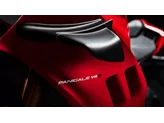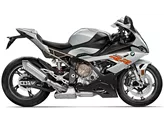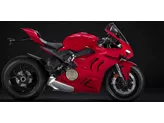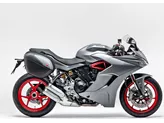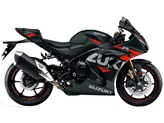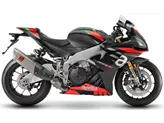Ducati Panigale V4 S 2018 vs. BMW S 1000 RR 2020

Ducati Panigale V4 S 2018

BMW S 1000 RR 2020
Overview - Ducati Panigale V4 S 2018 vs BMW S 1000 RR 2020
In terms of technical specifications, the Ducati Panigale V4 S 2018 and the BMW S 1000 RR 2020 have some similarities and differences. Both bikes have a 4-cylinder engine, but the Ducati has a V engine type while the BMW has an in-line engine type. The Ducati has a larger bore (81 mm) and stroke (53.5 mm) compared to the BMW (80 mm bore, 49.7 mm stroke). In terms of engine power, the Ducati has a higher output with 214 HP compared to the BMW's 207 HP. The Ducati also has a higher torque of 124 Nm compared to the BMW's 113 Nm. The compression ratio of the Ducati is 14, while the BMW has a compression ratio of 13.3.
Both bikes have a similar suspension setup with upside-down telescopic forks in the front and a monoshock in the rear. The Ducati has a front fork diameter of 43 mm, while the BMW has a larger diameter of 45 mm. Both bikes have adjustable compression, preload, and rebound settings for the front and rear suspension. The rear suspension of both bikes is made of aluminum.
In terms of chassis, both bikes have an aluminum frame. However, the Ducati has a monocoque frame type, while the BMW has a twin-tube, load-bearing engine frame type. The Ducati has a slightly steeper rake angle of 65.5 degrees compared to the BMW's 66.9 degrees. The trail of the Ducati is 100 mm, while the BMW has a trail of 93.9 mm.
Both bikes have double disk brakes in the front, but the Ducati has larger diameter disks (330 mm) compared to the BMW (320 mm). The Ducati also has radial, monoblock brake technology, while the BMW has radial brake technology.

Ducati Panigale V4 S 2018
In terms of advanced rider assistance systems, both bikes have ABS. However, the BMW has additional features such as riding modes, launch control, ride by wire, quickshifter, and traction control.
Both bikes have LED headlights and a fuel tank capacity of 16 liters (Ducati) and 16.5 liters (BMW). The front and rear tire dimensions are also similar, with a width of 120 mm in the front and 190 mm (BMW) or 200 mm (Ducati) in the rear.
Now let's discuss the strengths and weaknesses of each bike. The Ducati Panigale V4 S 2018 is known for its dreambike image and excellent brakes. It offers a pleasant seating position, even for taller riders, and has an enormous lean angle potential. The bike also has a leading electronics package and an impressive engine power that is finely controllable. It is suitable for both fast riders and hobby riders, as it can be utilized within their own capabilities. The Ducati also has ingenious handling, allowing it to finish bends early and accelerate quickly.

BMW S 1000 RR 2020
On the other hand, the BMW S 1000 RR 2020 offers a very linear power delivery, making it highly controllable. It has a wide rev range and pleasant control, with plenty of pressure in the lower rev range thanks to ShiftCam technology. The bike also has excellent Dynamic Damping Control (DDC) for precision and top performance. It has a super electronics package and provides a harmonious overall package both on the road and on the racetrack.
In terms of weaknesses, the Ducati Panigale V4 S 2018 has a seat that warms up noticeably, which can be uncomfortable in summer. The seat-tank combination also offers little grip in the braking zone. Additionally, the stability at the limit may require caution with tuning measures and discipline with seat position on fast and bumpy sections.
The BMW S 1000 RR 2020, in comparison, may seem a bit "characterless" compared to other bikes like the Aprilia and Honda. It also lags slightly behind on the spec sheet when directly compared to other bikes.
In conclusion, both the Ducati Panigale V4 S 2018 and the BMW S 1000 RR 2020 have their own strengths and weaknesses. The Ducati offers a dreambike image, excellent brakes, and impressive handling, while the BMW provides a linear power delivery, wide rev range, and top-notch electronics package. Ultimately, the choice between the two will depend on the rider's preferences and priorities.
Technical Specifications Ducati Panigale V4 S 2018 compared to BMW S 1000 RR 2020
Pros and Cons in comparison
Pros and Cons in comparison
Ducati Panigale V4 S 2018

La version S, en revanche, est recommandée aussi bien pour la route que pour la course. Si le pilote est un peu plus ambitieux sur la piste de course, le châssis conservera ses performances plus longtemps qu'avec la version de base, un léger ajustement de la raideur des ressorts à l'avant (pour les pilotes de course) étant recommandé. Les roues plus légères ont un effet nettement perceptible sur la maniabilité. C'est incroyable le niveau d'innovation et de technologie atteint par cette moto. Je n'avais encore jamais vu une électronique aussi sensible.
BMW S 1000 RR 2020
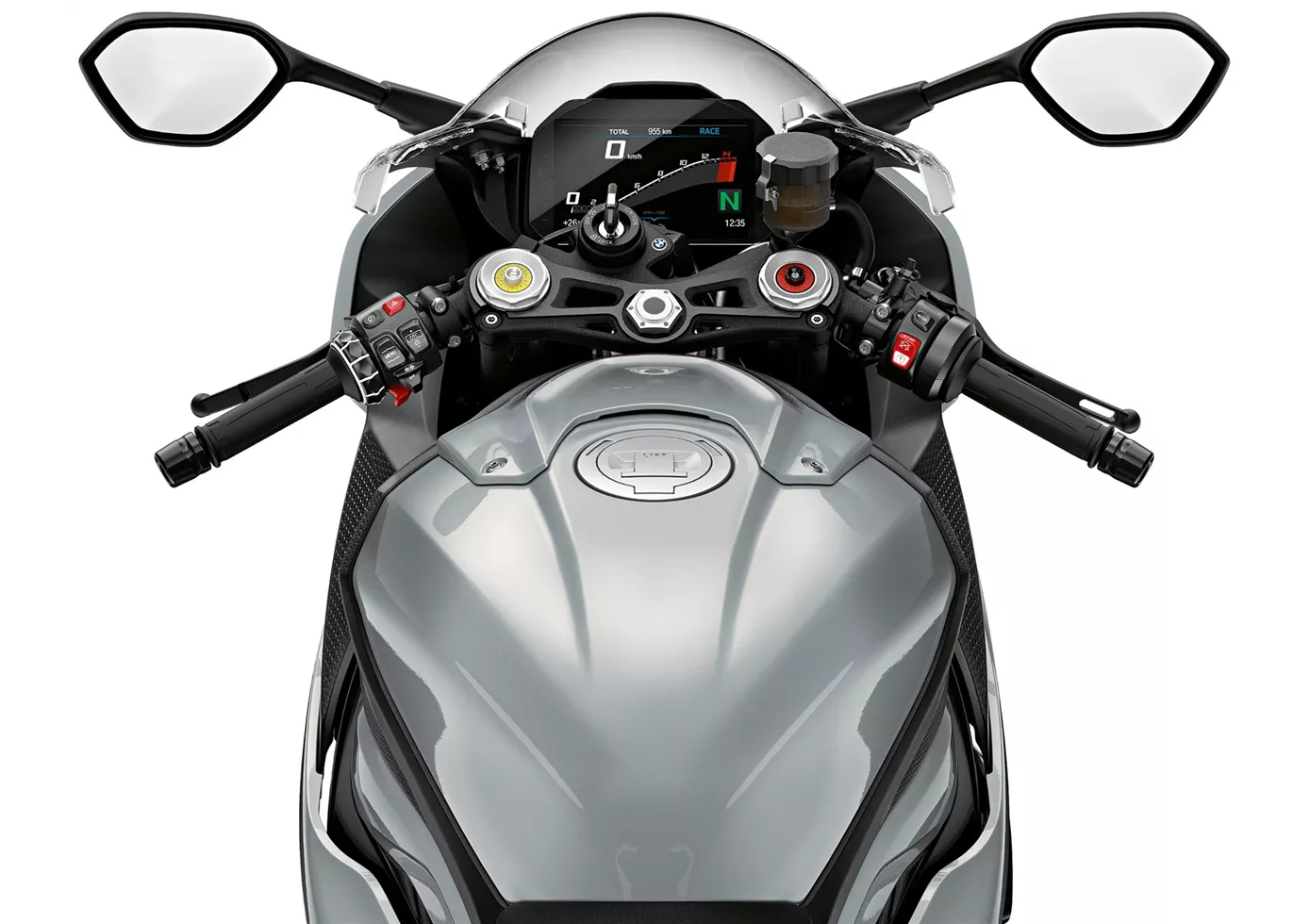
Une vraie superbike "à tout faire". Sur la piste de course comme sur la route, la BMW sait jouer de ses atouts. Grâce à la distribution variable de l'arbre à cames, le moteur puissant est déjà convaincant à bas régime et accélère harmonieusement sur toute la plage de régime, avec une puissance élevée dans tous les domaines. Pour le pilote amateur, le châssis fonctionne certainement de manière exceptionnelle dans toutes les situations, il garantit un feedback transparent et offre de nombreuses possibilités de réglage. La position de conduite est sportive, mais relativement confortable. L'électronique fonctionne de manière très harmonieuse sans infantiliser le pilote - TOP !
Price Comparison Avarage Market Price Ducati Panigale V4 S vs BMW S 1000 RR
There are a few key differences between a Ducati Panigale V4 S 2018 and a BMW S 1000 RR 2020. In terms of price, the actual average prices of both motorbikes are almost the same. A Ducati Panigale V4 S 2018 experiences a loss of 1,920 USD in one year and 2,680 USD in two years of ownership. This is offset by a loss of 430 USD and 140 USD for a BMW S 1000 RR 2020. Compared to BMW S 1000 RR 2020 there are less Ducati Panigale V4 S 2018 bikes available on the 1000PS.de Marketplace, specifically 5 compared to 16. It takes less time to sell a BMW S 1000 RR with 68 days compared to 97 days for the Ducati Panigale V4 S. Since model year 2018 1000PS.de editors have written 21 reviews for the Ducati Panigale V4 S and 135 reviews for the BMW S 1000 RR since model year 2010. The first review for the Ducati Panigale V4 S was published on 11/5/2017 and now has more than 131,500 views. This compares to more than 4,000 views for the first review on BMW S 1000 RR published on 4/16/2008.



